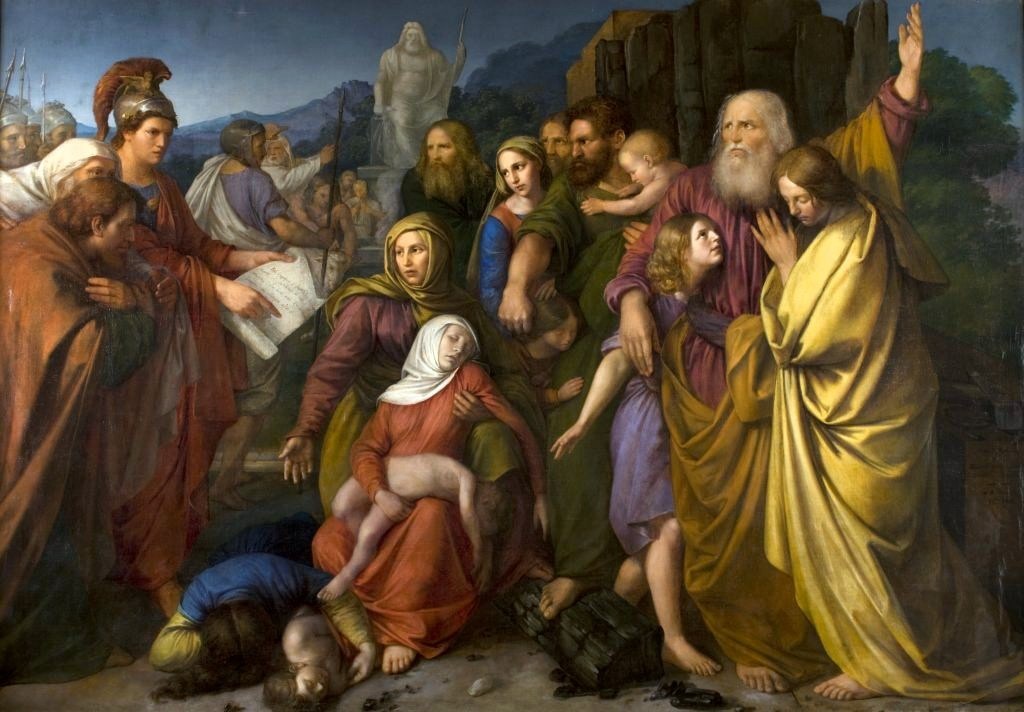|
Lunary
A lunary (from Latin ''lunarium''), also called a selenodromion or moonbook, is a book of prognostication based on the position of the moon at any given time. It is an astrological genre with parallels as far back as Akkadian literature. From the 2nd century AD, it is common in the Greco-Roman world. There are examples in Greek, Latin, Coptic, Middle English and Old Nubian. Pagan, Jewish and Christian examples are known. The lunary was "by far the most popular and widely circulated prognostic genre" during the Middle Ages. Use of the term "lunary" for the genre is a modern convention. In Middle English, ''lunarie'' referred to volvelles and not prognostic texts. The Latin ''lunaria'' had a similar usage. The term "lunary" is sometimes applied to the practice of creating lunaries and determining propitious days on the basis of the moon, a form of hemerology. Lunaries are similar to electionaries in that they were used for choosing (electing) astrological propitious dates for e ... [...More Info...] [...Related Items...] OR: [Wikipedia] [Google] [Baidu] |
Latin
Latin ( or ) is a classical language belonging to the Italic languages, Italic branch of the Indo-European languages. Latin was originally spoken by the Latins (Italic tribe), Latins in Latium (now known as Lazio), the lower Tiber area around Rome, Italy. Through the expansion of the Roman Republic, it became the dominant language in the Italian Peninsula and subsequently throughout the Roman Empire. It has greatly influenced many languages, Latin influence in English, including English, having contributed List of Latin words with English derivatives, many words to the English lexicon, particularly after the Christianity in Anglo-Saxon England, Christianization of the Anglo-Saxons and the Norman Conquest. Latin Root (linguistics), roots appear frequently in the technical vocabulary used by fields such as theology, List of Latin and Greek words commonly used in systematic names, the sciences, List of medical roots, suffixes and prefixes, medicine, and List of Latin legal terms ... [...More Info...] [...Related Items...] OR: [Wikipedia] [Google] [Baidu] |
Christianity
Christianity is an Abrahamic monotheistic religion, which states that Jesus in Christianity, Jesus is the Son of God (Christianity), Son of God and Resurrection of Jesus, rose from the dead after his Crucifixion of Jesus, crucifixion, whose coming as the Messiah#Christianity, messiah (Christ (title), Christ) was Old Testament messianic prophecies quoted in the New Testament, prophesied in the Old Testament and chronicled in the New Testament. It is the Major religious groups, world's largest and most widespread religion with over 2.3 billion followers, comprising around 28.8% of the world population. Its adherents, known as Christians, are estimated to make up a majority of the population in Christianity by country, 157 countries and territories. Christianity remains Christian culture, culturally diverse in its Western Christianity, Western and Eastern Christianity, Eastern branches, and doctrinally diverse concerning Justification (theology), justification and the natur ... [...More Info...] [...Related Items...] OR: [Wikipedia] [Google] [Baidu] |
Zodiac
The zodiac is a belt-shaped region of the sky that extends approximately 8° north and south celestial latitude of the ecliptic – the apparent path of the Sun across the celestial sphere over the course of the year. Within this zodiac belt appear the Moon and the brightest planets, along their orbital planes. The zodiac is divided along the ecliptic into 12 equal parts, called " signs", each occupying 30° of celestial longitude. These signs roughly correspond to the astronomical constellations with the following modern names: Aries, Taurus, Gemini, Cancer, Leo, Virgo, Libra, Scorpio, Sagittarius, Capricorn, Aquarius, and Pisces. The signs have been used to determine the time of the year by identifying each sign with the days of the year the Sun is in the respective sign. In Western astrology, and formerly astronomy, the time of each sign is associated with different attributes. The zodiacal system and its angular measurement in 360 sexagesimal degree ... [...More Info...] [...Related Items...] OR: [Wikipedia] [Google] [Baidu] |
Synodic Month
In lunar calendars, a lunar month is the time between two successive Syzygy (astronomy), syzygies of the same type: new moons or full moons. The precise definition varies, especially for the beginning of the month. Variations In Shona people, Shona, Middle Eastern, and European traditions, the month starts when the new moon, young crescent moon first becomes visible, at evening, after Astronomical conjunction, conjunction with the Sun one or two days before that evening (e.g., in the Islamic calendar). In Egyptian calendar, ancient Egypt, the lunar month began on the day when the waning moon could no longer be seen just before sunrise. Others run from full moon to full moon. Yet others use calculation, of varying degrees of sophistication, for example, the Hebrew calendar, the Chinese calendar, or the Computus, ecclesiastical lunar calendar. Calendars count integer days, so months may be 29 or 30 days in length, in some regular or irregular sequence. Lunar Cycles, Lunar cycles ... [...More Info...] [...Related Items...] OR: [Wikipedia] [Google] [Baidu] |
Lunar Month
In lunar calendars, a lunar month is the time between two successive syzygies of the same type: new moons or full moons. The precise definition varies, especially for the beginning of the month. Variations In Shona, Middle Eastern, and European traditions, the month starts when the young crescent moon first becomes visible, at evening, after conjunction with the Sun one or two days before that evening (e.g., in the Islamic calendar). In ancient Egypt, the lunar month began on the day when the waning moon could no longer be seen just before sunrise. Others run from full moon to full moon. Yet others use calculation, of varying degrees of sophistication, for example, the Hebrew calendar, the Chinese calendar, or the ecclesiastical lunar calendar. Calendars count integer days, so months may be 29 or 30 days in length, in some regular or irregular sequence. Lunar cycles are prominent, and calculated with great precision in the ancient Hindu Panchangam calendar, widely us ... [...More Info...] [...Related Items...] OR: [Wikipedia] [Google] [Baidu] |
Lunar Station
Often called lunar mansion, a lunar station or lunar house is a segment of the ecliptic through which the Moon passes in its orbit around the Earth. The concept was used by several ancient cultures as part of their calendrical system. Stations in different cultures In general, though not always, the zodiac is divided into 27 or 28 segments relative to the vernal equinox point or the fixed stars – one for each day of the lunar month. (A sidereal month lasts about days.) The Moon's position is charted with respect to those fixed segments. Since the Moon's position at any given stage will vary according to Earth's position in its own orbit, lunar stations are an effective system for keeping track of the passage of seasons. Various cultures have used sets of lunar stations astrologically; for example, the Jyotisha astrological ''nakshatras'' of Hindu culture, the Arabic manzils (''manāzil al-qamar''), the Twenty-Eight Mansions of Chinese astronomy, and the 36 ... [...More Info...] [...Related Items...] OR: [Wikipedia] [Google] [Baidu] |
Volvelle
A volvelle or wheel chart is a type of slide chart, a paper construction with rotating parts. It is considered an early example of a paper analog computer. Volvelles have been produced to accommodate organization and calculation in many diverse subjects. Early examples of volvelles are found in the pages of astronomy books. In the twentieth century, the volvelle had many diverse uses. In ''Reinventing the Wheel'', author Jessica Helfand introduces twentieth-century volvelles with this: The rock band Led Zeppelin employed a volvelle in the sleeve design for the album ''Led Zeppelin III'' (1970). Two games from the game company Infocom included volvelles inside their package as "feelies": ''Sorcerer (video game), Sorcerer'' (1983) and ''A Mind Forever Voyaging'' (1985). Both volvelles served to impede copying of the games, because they contained information needed to play the game. See also * E6B * Ramon Llull * Planisphere * Pop-up book * Slide chart * Zairja References ... [...More Info...] [...Related Items...] OR: [Wikipedia] [Google] [Baidu] |
Middle Ages
In the history of Europe, the Middle Ages or medieval period lasted approximately from the 5th to the late 15th centuries, similarly to the post-classical period of global history. It began with the fall of the Western Roman Empire and transitioned into the Renaissance and the Age of Discovery. The Middle Ages is the middle period of the three traditional divisions of Western history: classical antiquity, the medieval period, and the modern period. The medieval period is itself subdivided into the Early, High, and Late Middle Ages. Population decline, counterurbanisation, the collapse of centralised authority, invasions, and mass migrations of tribes, which had begun in late antiquity, continued into the Early Middle Ages. The large-scale movements of the Migration Period, including various Germanic peoples, formed new kingdoms in what remained of the Western Roman Empire. In the 7th century, North Africa and the Middle East—once part of the Byzantine Empire� ... [...More Info...] [...Related Items...] OR: [Wikipedia] [Google] [Baidu] |
Judaism
Judaism () is an Abrahamic religions, Abrahamic, Monotheism, monotheistic, ethnic religion that comprises the collective spiritual, cultural, and legal traditions of the Jews, Jewish people. Religious Jews regard Judaism as their means of observing the Mosaic covenant, which they believe was established between God in Judaism, God and the Jewish people. The religion is considered one of the earliest monotheistic religions. Jewish religious doctrine encompasses a wide body of texts, practices, theological positions, and forms of organization. Among Judaism's core texts is the Torah—the first five books of the Hebrew Bible—and a collection of ancient Hebrew scriptures. The Tanakh, known in English as the Hebrew Bible, has the same books as Protestant Christianity's Old Testament, with some differences in order and content. In addition to the original written scripture, the supplemental Oral Torah is represented by later texts, such as the Midrash and the Talmud. The Hebrew ... [...More Info...] [...Related Items...] OR: [Wikipedia] [Google] [Baidu] |
Prediction
A prediction (Latin ''præ-'', "before," and ''dictum'', "something said") or forecast is a statement about a future event or about future data. Predictions are often, but not always, based upon experience or knowledge of forecasters. There is no universal agreement about the exact difference between "prediction" and " estimation"; different authors and disciplines ascribe different connotations. Future events are necessarily uncertain, so guaranteed accurate information about the future is impossible. Prediction can be useful to assist in making plans about possible developments. Opinion In a non-statistical sense, the term "prediction" is often used to refer to an informed guess or opinion. A prediction of this kind might be informed by a predicting person's abductive reasoning, inductive reasoning, deductive reasoning, and experience; and may be useful—if the predicting person is a knowledgeable person in the field. The Delphi method is a technique for elicitin ... [...More Info...] [...Related Items...] OR: [Wikipedia] [Google] [Baidu] |





